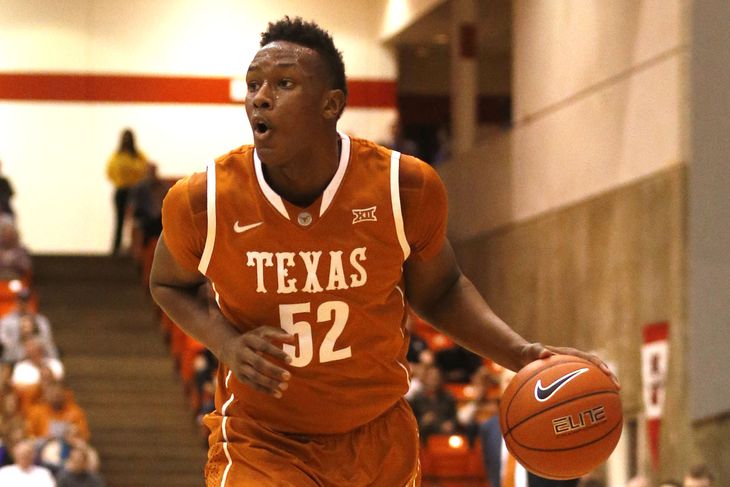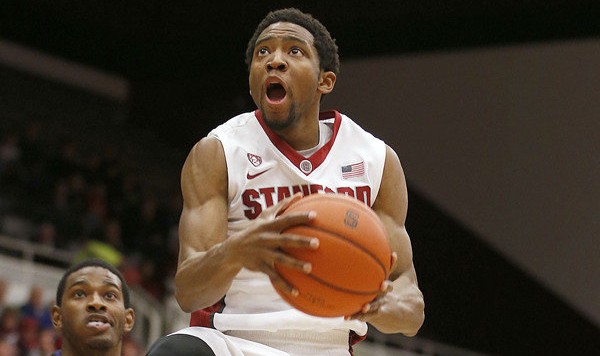For the power conference teams, the conference tournament is usually a mixture of trying to get rested for the NCAA tournament, trying to move off the bubble, or maybe settle a score with the rival you only got to play once in the regular season. For others, it’s the last chance to squeak into the NCAA tournament by winning three or four games in as many days.
Not many teams do make the run through the conference tournament as a low seed, with the last good examples being Colorado in 2012 or Georgia in 2008. However, with the depth (or mediocrity) in some of the power conferences this year, there are a few teams who have a chance at making a run all the way to their respective tournament titles:
1. West Virginia (Big 12, No. 5 seed)
There are a number of Big 12 teams with a chance to run through the tournament, especially with top-seeded Kansas likely to rest Perry Ellis, Wayne Selden, and perhaps even Frank Mason a bit in preparation for the NCAA tournament. West Virginia looks like a good candidate, as its frenetic pace and hockey-style substitutions will let them press teams out of games as well as allow their depth — over three games in three days — to eventually wear out opponents. The Mountaineers get Baylor in the first game, which won’t be easy, but if they get by the Bears, they will face a (likely) resting Kansas team, and then they’re just a win away from the Big 12 tournament title.
2. Stanford (Pac-12, No. 6 seed)
Stanford has not backed up its Sweet 16 run from last year, but the Cardinal have a chance to make things right this weekend in Las Vegas. Although they are the six seed, the Cardinal finished much higher in the league in point differential, and ranked fourth and fifth in offense and defense, respectively. Assuming Stanford gets past Washington in the first round, it will meet Utah in the quarterfinals. The teams’ first meeting did not go well for the Cardinal, but it was at Utah, and Stanford has the size inside to match the Utes. Also, I’m not a big believer in momentum, but with Utah going just 2-3 to close the regular season, the Utes don’t have much of it. (Of course, neither does Stanford, which lost its final three games).
3. Ohio State (Big Ten, No. 6 seed)
The key in the Big Ten is avoiding Wisconsin, which won the league by two games and was by far the best team in the league statistically. Enter the Buckeyes, who will get the winner of Minnesota and Rutgers, then Michigan State, then (likely) Maryland, all of which are winnable games. In fact, the Buckeyes had roughly the same point differential as the Spartans, and outscored the Terps on a per-possession basis. (FYI: Maryland is your trendy “high seed to not make the second weekend of the NCAA tournament” pick.)
Furthermore, Ohio State has D’Angelo Russell, also known as the league’s best player not named Frank Kaminsky. Russell shot just under 50 percent on twos and just under 40 percent on threes despite leading the team in shots. Moreover, even with all the shots he took, he still ranked second in the conference in assist rate. With all the talk of Jahlil Okafor and Karl Towns, you could give Russell the national freshman of the year award and I wouldn’t bat an eye.
4. Wyoming (Mountain West, No. 4 seed)
The Cowboys looked like the Mountain West favorite for much of the early part of the season, but really trailed off late, losing three of their last four and going 3-5 in their final eight games. The main statistical culprit has been the offense, as Wyoming scored under a point per possession in conference play, finishing eighth in the league. The main culprit in terms of a specific event was the contraction of mononucleosis by Larry Nance, Jr., by far the team’s most important player. Without Nance, this team fell apart at the offensive end of the floor.
Still, Wyoming attempts a lot of threes, 42.2 percent of its field goal attempts, and although the Cowboys shoot just 30.9 percent behind the arc, anything can happen in a one game sample. Moreover, the return of Nance gives this team a very legitimate chance of being able to say, “We now have our team back together again and can make a run in Vegas.” If the Cowboys do bomb away, backed up by the fact that they shoot a league-best 53.2 percent inside the arc, they could score enough points to allow the fourth-ranked defense in the league to propel them to a couple upsets and maybe an NCAA tournament bid.

Myles Turner
5. Texas (Big 12, No. 7 seed)
I am including two Big 12 teams because it has been the deepest and best league all season, and because I can’t help but think the Longhorns are going to eventually turn it around. There is too much talent on the team not to. Even with its struggles this year, Texas still ranks 20th in KenPom, which is 5th among Big 12 teams, and the Longhorns finished the season ranked 3rd in the conference in defense.
The culprit has been their 7th-ranked offense. Point guard Isaiah Taylor was second in the league in assist rate, but he also took the most shots on the team and shot just 40 percent on twos and 25 percent on threes. The Longhorns will have to get more positive contributions on offense from freshman Myles Turner. They’ll also need a big tournament from Jonathan Holmes, who — with just a 39.5-percent effective field goal rate in league play — has had one of the more disappointing seasons in the country.
Texas led the league in two-point defense, ranked second in defensive rebounding, and probably got a bit unlucky in terms of its three point defense, with opponents shooting 37.3 percent beyond the arc against the Horns. If the offense shows up at all, I like the Longhorns to go on a bit of a run, dispatching Texas Tech in the first game, then an Iowa State team the Horns played close twice this season, and then potentially a win over rival Oklahoma to sneak into the title game.

